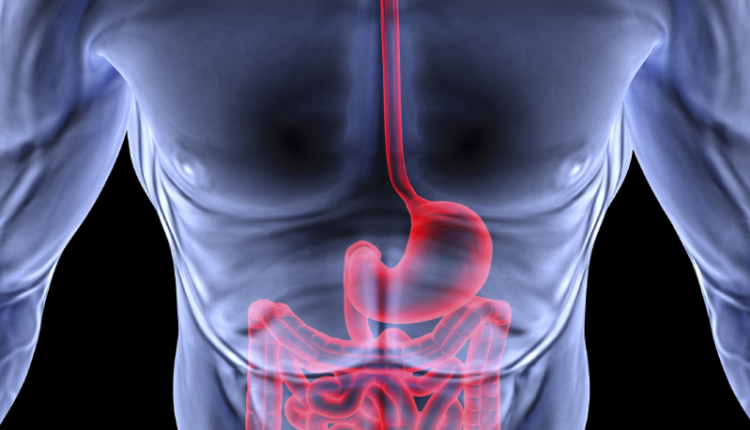
Eosinophilic oesophagitis: what it is, what the symptoms are and how to treat it
Eosinophilic oesophagitis is a chronic immune-mediated disease of the oesophagus resulting in predominantly eosinophilic inflammation of the oesophagus; it can cause reflux-like symptoms, dysphagia, and food obstruction
Eosinophilic oesophagitis, diagnosis is based on endoscopy with biopsy
Treatment includes proton pump inhibitors, topical corticosteroids, changes in diet, and sometimes oesophageal dilatation.
Eosinophilic oesophagitis is an increasingly recognised disease that can start at any time between childhood and adulthood; it occasionally occurs in the elderly.
It is more frequent in men.
The cause of eosinophilic oesophagitis is probably an immune response to food antigens in patients with genetic susceptibility; environmental allergens may also be triggers.
Chronic untreated oesophageal inflammation can eventually lead to narrowing and stenosis of the oesophagus.
Symptoms of eosinophilic oesophagitis
Infants and children may present with food refusal, vomiting, weight loss, abdominal pain, and/or chest pain.
In adults, food obstruction is sometimes the first manifestation, and most patients present with dysphagia.
Gastro-oesophageal reflux disease symptoms, such as heartburn, may occur.
Patients often also have manifestations of other atopic diseases (e.g. asthma, eczema, allergic rhinitis).
Diagnosis of eosinophilic oesophagitis
- Endoscopy with biopsy
- Sometimes barred meal
(See also the American College of Gastroenterology’s Evidenced Based Approach to the Diagnosis and Management of Esophageal Eosinophilia and Eosinophilic Esophagitis (EoE)).
The typical patient with eosinophilic oesophagitis presents with dysphagia for solids and a history of atopy.
The diagnosis of eosinophilic oesophagitis is also considered when reflux symptoms do not respond to acid-suppressive therapy.
It should also be considered in adults presenting with oesophageal food occlusion or in adults who have non-cardiac chest pain.
Diagnosis requires endoscopy with biopsy showing eosinophilic infiltration (≥ 15 eosinophils/per field).
Although visible abnormalities (e.g., linear furrows, stenosis, circular rings, loss of vascular signs, white exudates) may be evident on endoscopy, the appearance may be normal, so biopsies are essential.
Since gastro-oesophageal reflux disease may also cause eosinophilic infiltrates, patients who have mostly reflux symptoms must have biopsies; samples from the proximal and middle oesophagus must be processed separately from samples from the distal oesophagus.
A barred meal may show stacked circular rings, longitudinal furrows, a narrowing of the oesophageal calibre, or stenosis.
Food allergy testing is often performed to identify possible triggers but has minimal benefit because eosinophilic oesophagitis is not thought to be IgE-mediated.
Treatment of eosinophilic oesophagitis
- Proton pump inhibitors
- Topical corticosteroids
- Elimination diet
- Occasionally oesophageal dilatation
- In adults, the first-line therapy is a proton pump inhibitor.
- In children, proton pump inhibitors are generally used if changes in diet are ineffective.
Proton pump inhibitors are thought to work through the eotaxin-3 pathway.
If proton pump inhibitor therapy fails, topical corticosteroids are usually administered to treat eosinophilic oesophagitis.
Patients can use a multi-dose inhaler of fluticasone (880 mcg 2 times/day); the drug is sprayed into the mouth without inhalation and then swallowed.
Alternatively, a viscous oral suspension of budesonide 1 mg can be taken 30 minutes after breakfast and 30 minutes after dinner.
Budesonide can also be mixed with a thickener (most often a sugar substitute) into a liquid paste and swallowed.
Fluticasone or budesonide is administered for 8 weeks to determine its efficacy.
If the patient achieves remission with one of these therapies, they are often continued indefinitely.
The maintenance doses of these drugs are not well established.
Recent studies show that monoclonal antibodies against IL-13 and IL-5 may be useful; further studies are in progress.
The six-food elimination diet is the one most often recommended for eosinophilic oesophagitis
This diet eliminates the foods most likely to cause IgE-mediated food reactions (milk, eggs, soya, wheat, peanuts/nuts, fish/crustaceans).
It has been shown to be superior to an elimination diet based on skin and blood tests.
The elemental diet is effective in both adults and children, but is often not practical in adults.
Patients who have significant stenosis may need cautious oesophageal dilation using a balloon or bougie dilator; multiple, cautious, progressive dilations are performed to help prevent oesophageal perforation.
Read Also:
Emergency Live Even More…Live: Download The New Free App Of Your Newspaper For IOS And Android
Oesophagitis: Symptoms, Diagnosis And Treatment
Asthma, The Disease That Takes Your Breath Away
Gastroesophageal Reflux: Causes, Symptoms, Tests For Diagnosis And Treatment
Global Strategy For Asthma Management And Prevention
Paediatrics: ‘Asthma May Have ‘Protective’ Action Against Covid’
Esophageal Achalasia, The Treatment Is Endoscopic
Oesophageal Achalasia: Symptoms And How To Treat It



